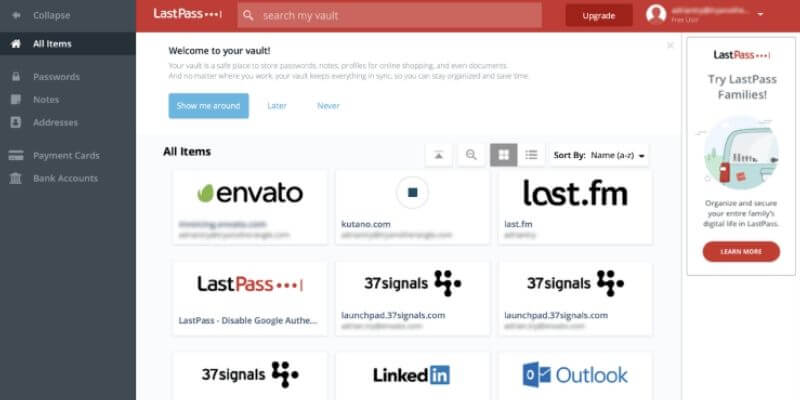

the URL is sent and stored in plaintext.decrypted is done on the client (desktop app or your browser).credentials are encrypted before they are sent to the server.the master password is never sent to the server.Since the Vault is already encrypted before it leaves your computer and reaches the LastPass server, not even LastPass employees can see your sensitive data. LastPass encrypts your Vault before it goes to the server using 256-bit AES encryption. When asked about this by, LastPass responds: This would help them prioritize which sites to check whether or not password reset, autofill, and equivalent domains work? They can get an idea But does that really take that much time? You can always decrypt only the URLs first whenever you open the vault.Īnother use case is to get some analytics of the sites that LastPass is stored.

If the URLs, in plaintext, then I can search through the ciphertexts and only decrypt the account chunks I need. It might be a stretch but one guess is for the efficiency of the application. I don’t know why LastPass decided to keep the URLs in plaintext. If we display the individual fields, it would look something like this. each chunk can then be decomposed into the individual fields ( source).decoding into bytes and divided into several chunks (one chunk is).We intercept the encrypted vault in the /getaccts.php request. Once authenticated, LastPass will try to download the vault. This is the hash that is sent along with the username and 2FA OTP in the /login.php request to authenticate. You hash the AES key one more time to get the authentication hash ( source) auth_hash = hashlib.pbkdf2_hmac('sha256', key, password, 1, 32) Having a lot of iterations make it harder to brute force the password. Here, we hash password with the salt username with 100100 iterations. We use the username and password to derive the key used to encrypt and decrypt the Vault. When we inspect the traffic, we are looking for the _password form field which has the plaintext master password.


 0 kommentar(er)
0 kommentar(er)
